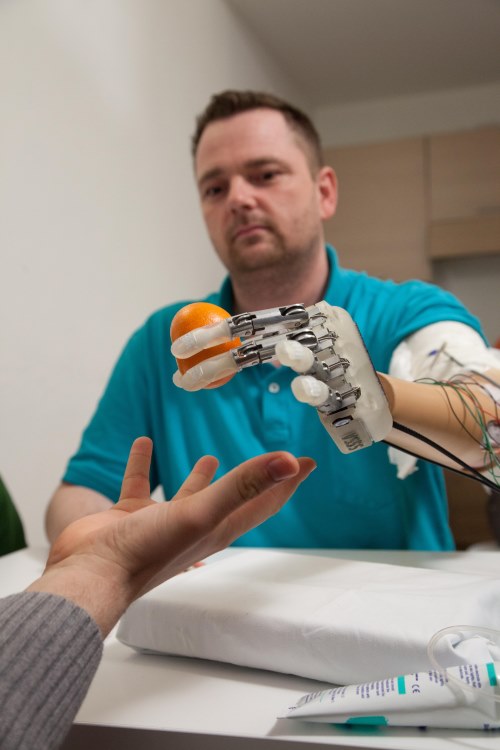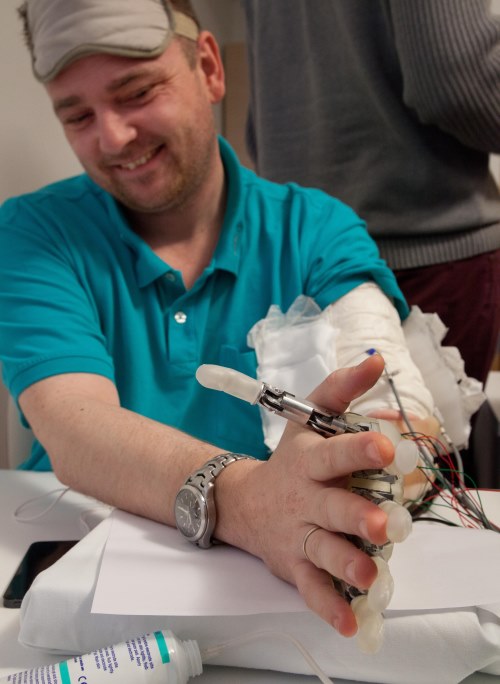Prostheses have come a long way, but now they’re going even farther by granting amputees their sense of touch.

Dennis Aabo Sorensen using a prosthetic hand that's granted him his sense of touch. (Image via LifeHand 2 / Patrizia Tocci )
Nine years ago, Dennis Aabo Sorensen lost his left arm in a fireworks accident. Since then, he’s used a prosthetic hand that detects muscle movement so he can still pick up objects — but until now he couldn’t feel them.
Thanks to research done by a team at Ecole Polytechnique Federale de Lausanne Center for Neuroprosthetics (EPFL) and the Sant'Anna School of Advanced Studies in Italy, Sorensen is now the first amputee in the world to feel with his prosthetic hand.
How they did it
First, the team measured the tension in artificial tendons that control the finger movements and turned this measurement into an electrical current. Since the electrical signal was too coarse to be understood by the nervous system, the team used computer algorithms to transform the electrical signal into an impulse that the nerves could interpret.

(Image via LifeHand 2 / Patrizia Tocci)
By sending the digitally refined signal through wires and into four electrodes that were surgically implanted into the remains of Sorensen’s upper arm nerves, they were able to create the sense of touch.

(Image via LifeHand 2 / Patrizia Tocci)
“This is the first time in neuroprosthetics that sensory feedback has been restored and used by an amputee in real time to control an artificial limb,” said Silvestro Micera, Director of the Translational Neural Engineering Laboratory and the Institute of Bioengineering at EPFL.
In January 2013, Sorensen had the ultra-thin electrodes implanted. These made it possible to relay extremely weak electrical signals directly into the nervous system.
Watch Sorensen use the sensory-enhanced prosthetic.
Next steps
It may be a while before this hand becomes commercially available, but in the meantime, the team must miniaturize the electronic used to make the prosthetic portable Then they can fine-tune the sensory technology.
Advertisement
Learn more about Electronic Products Magazine





